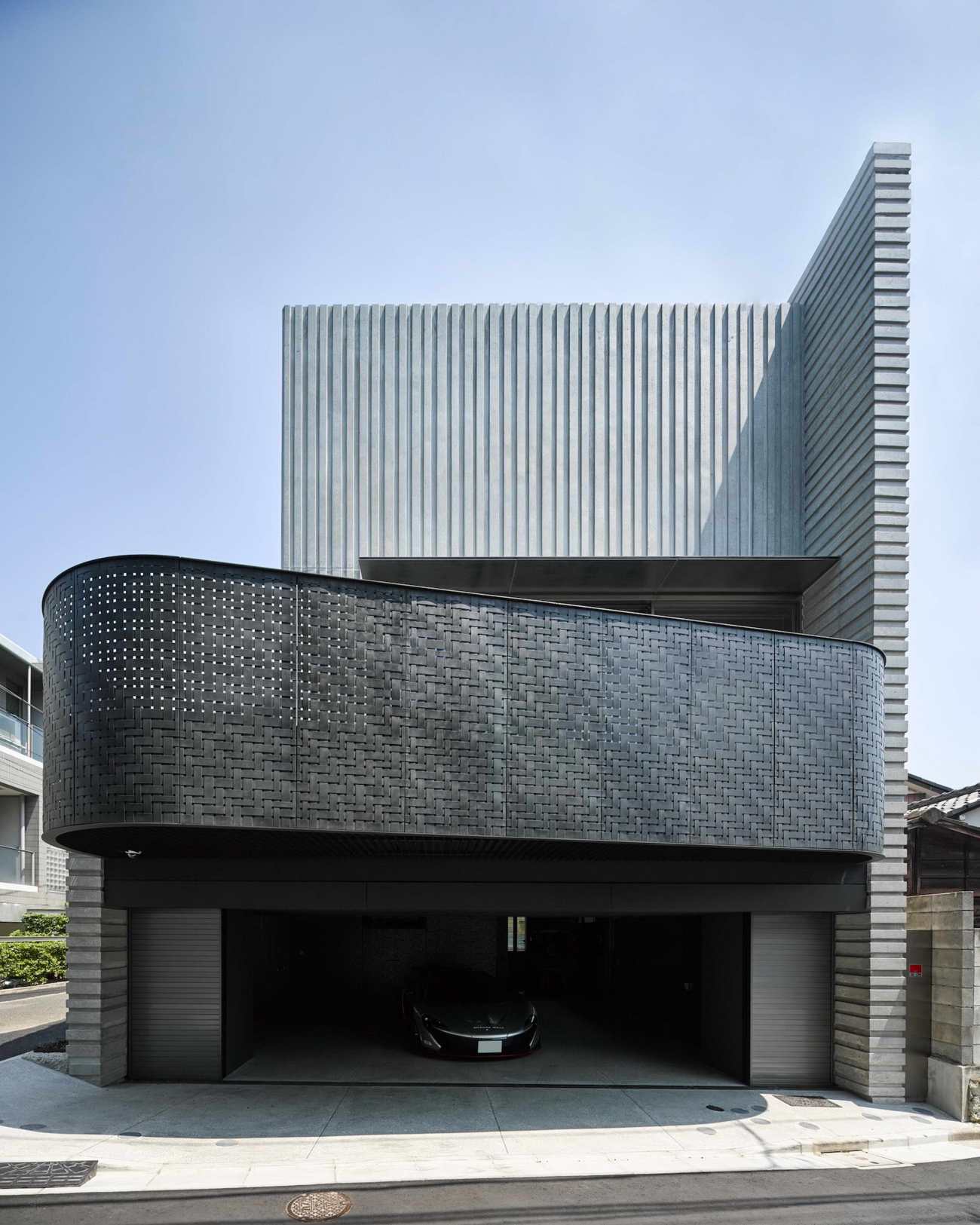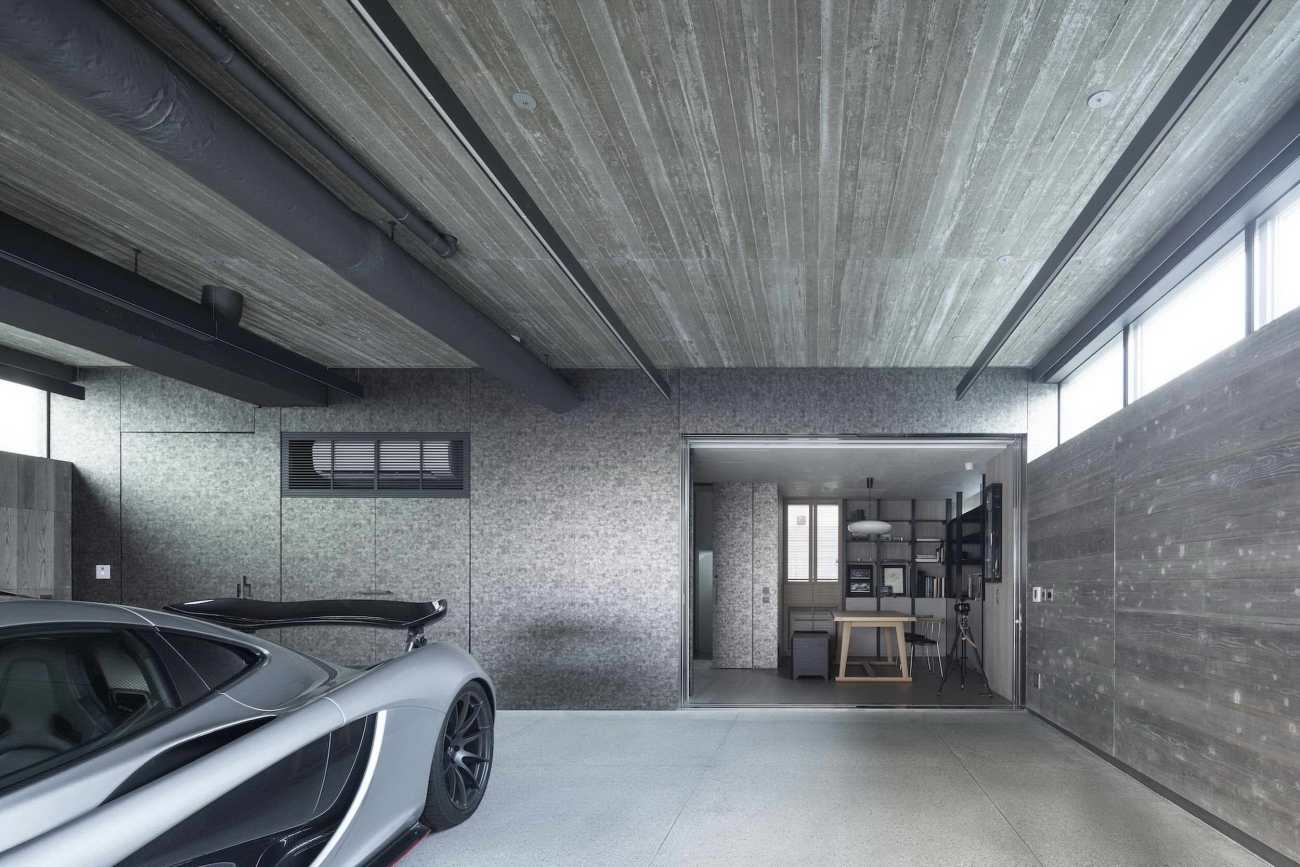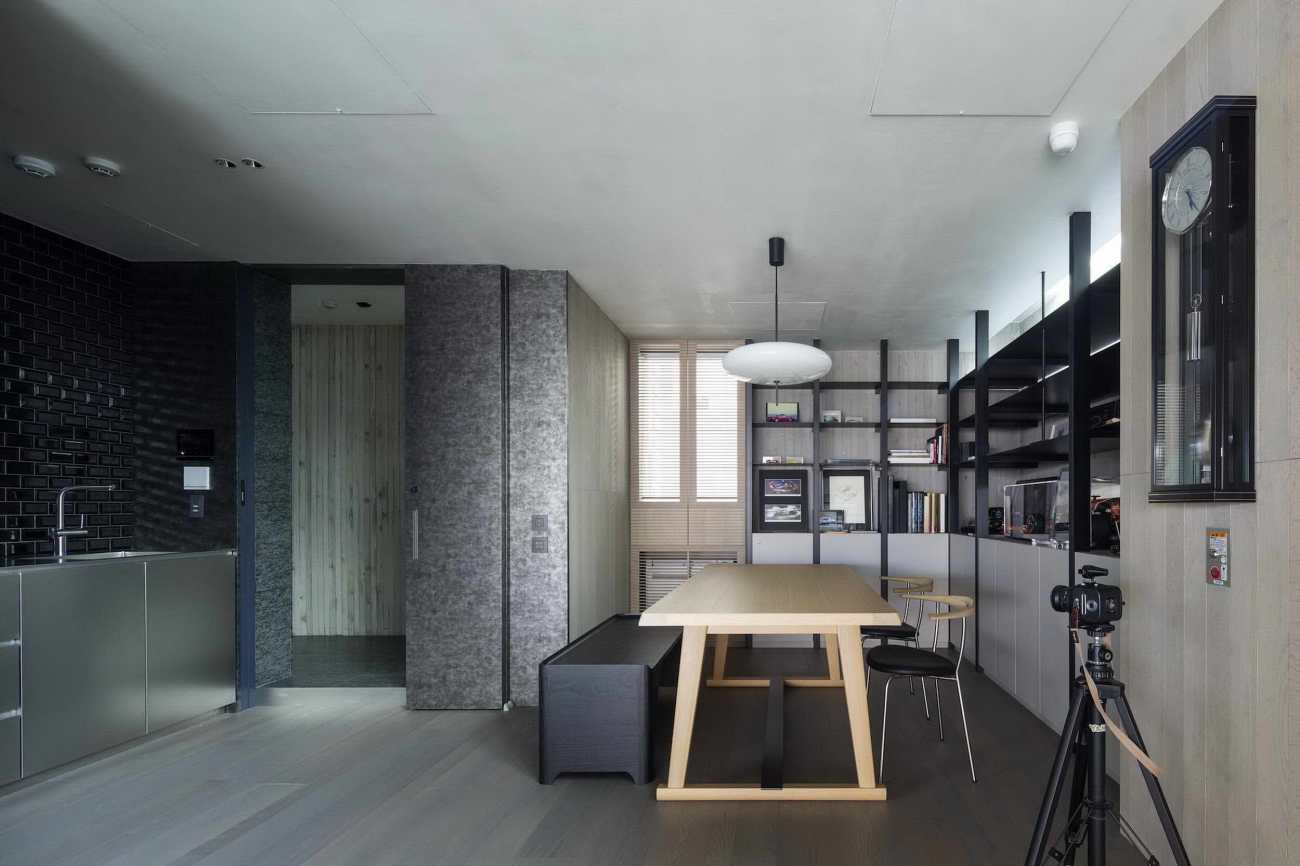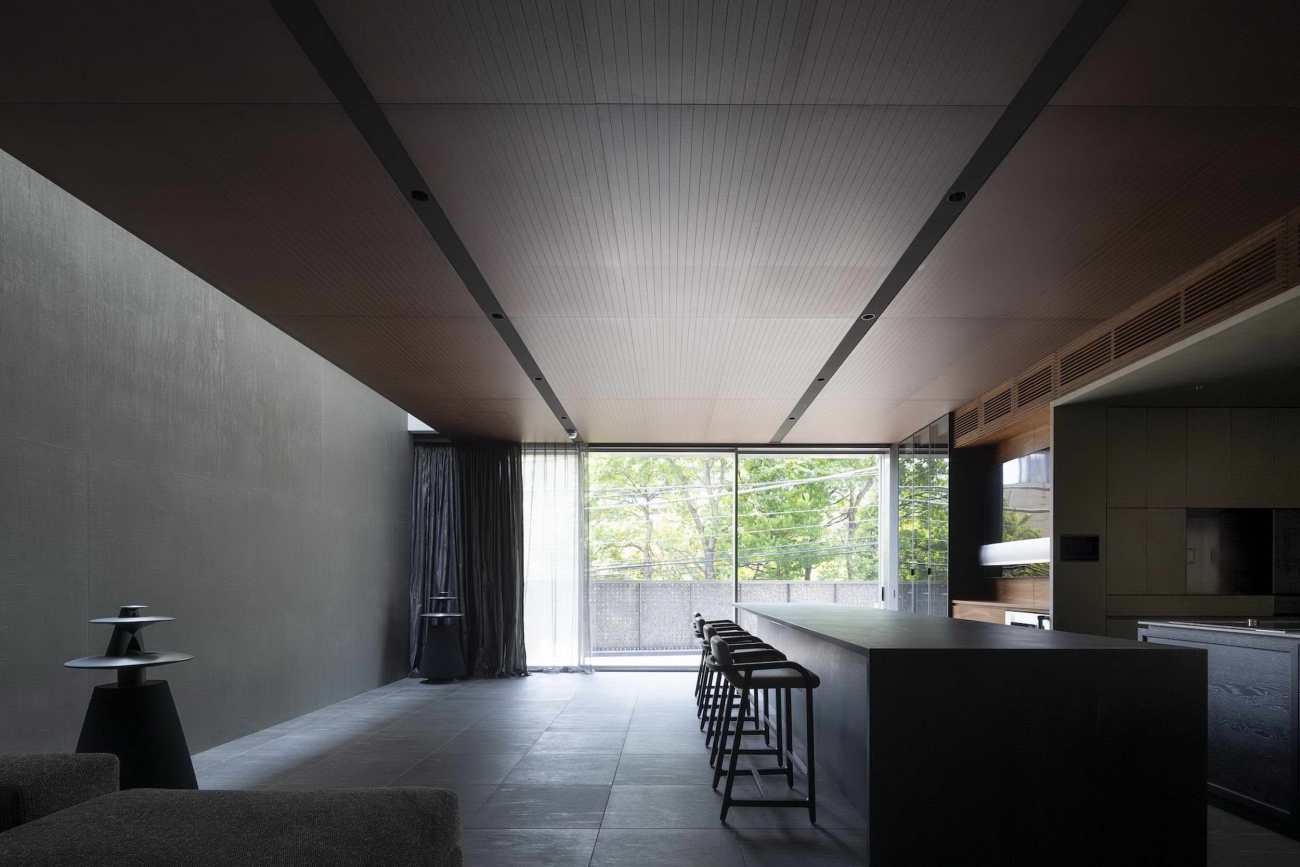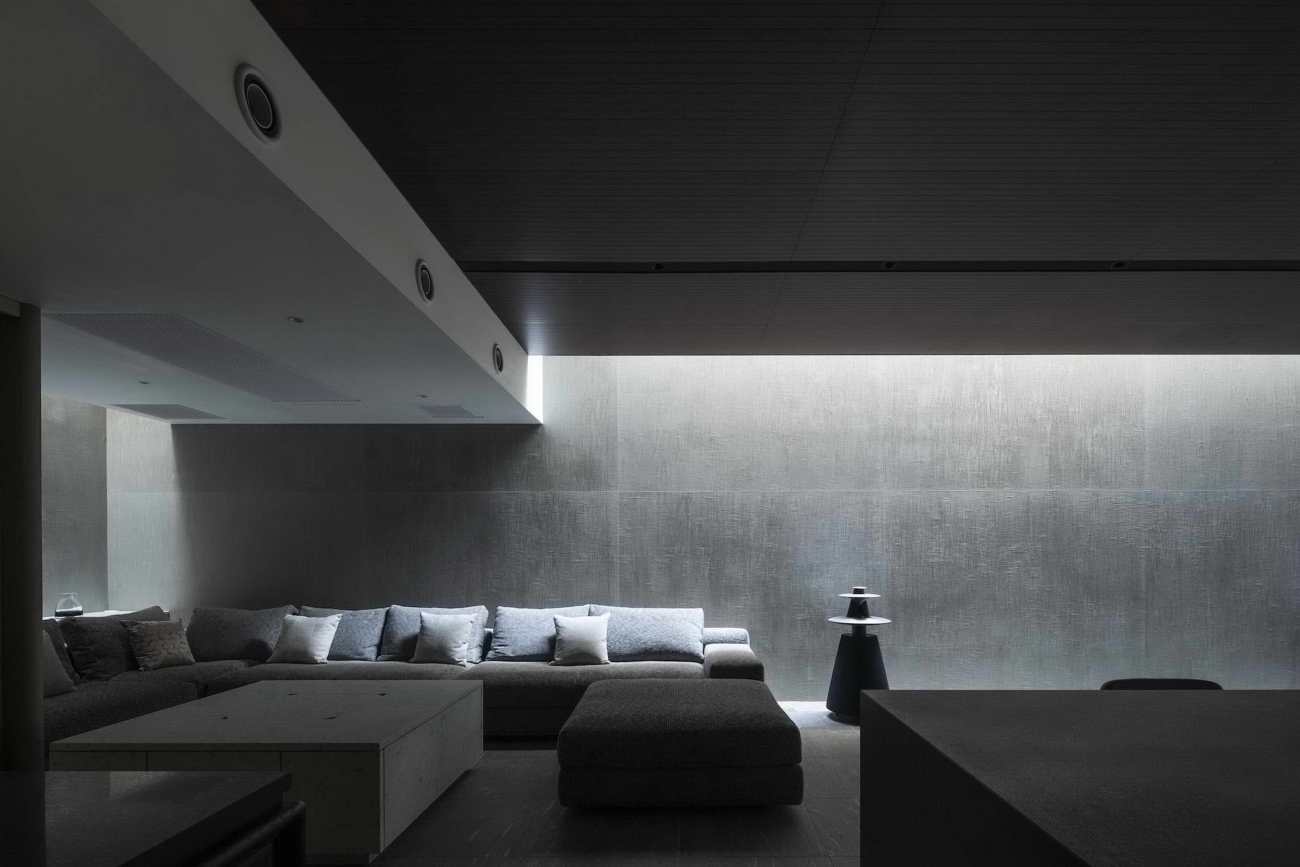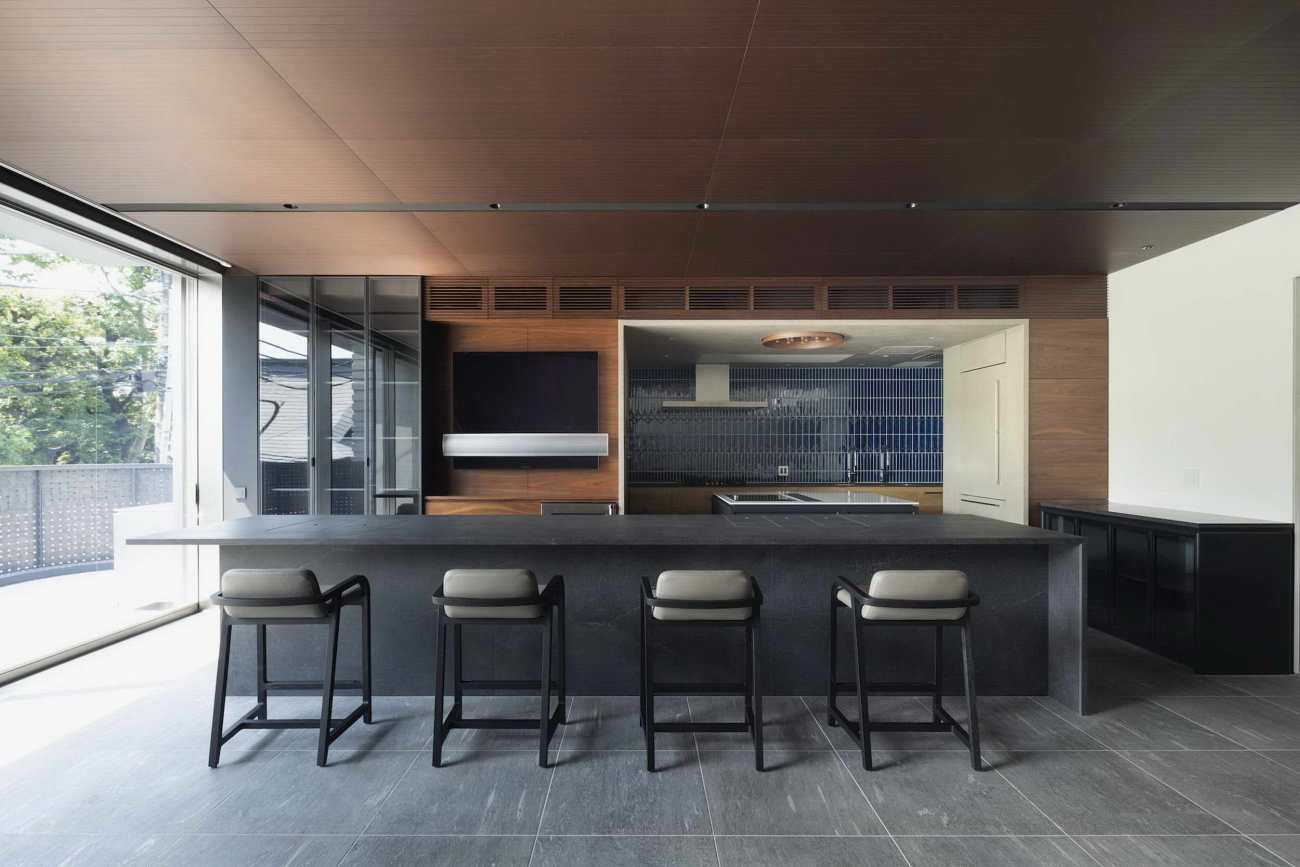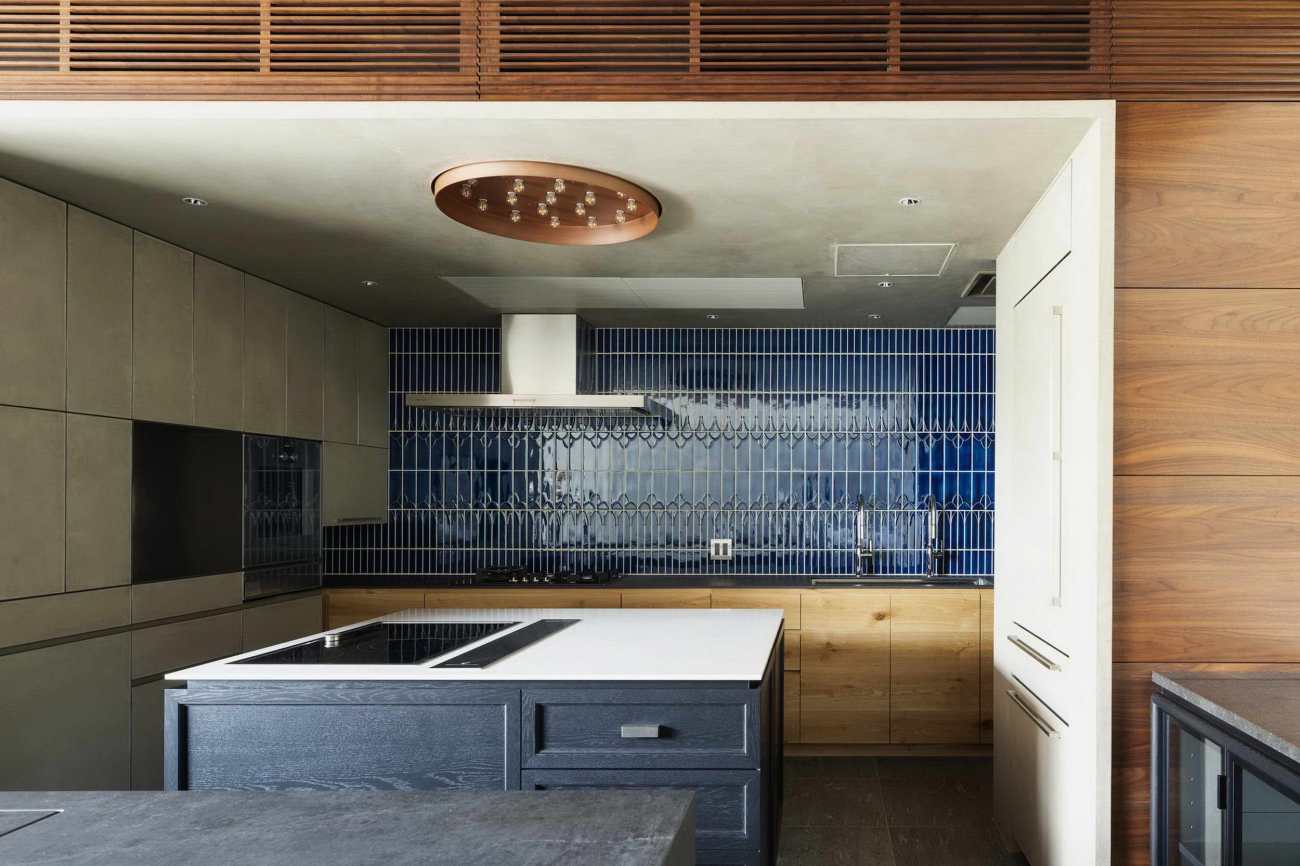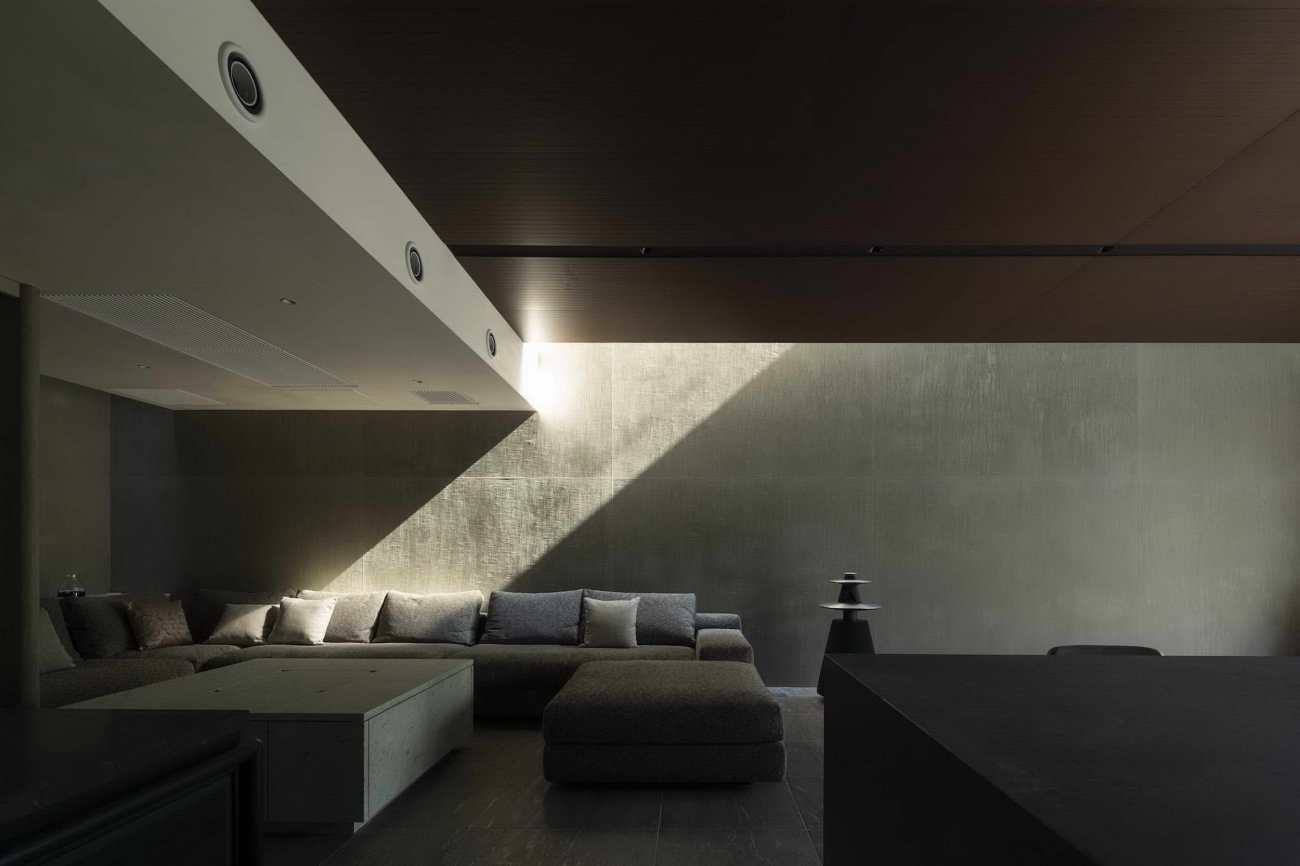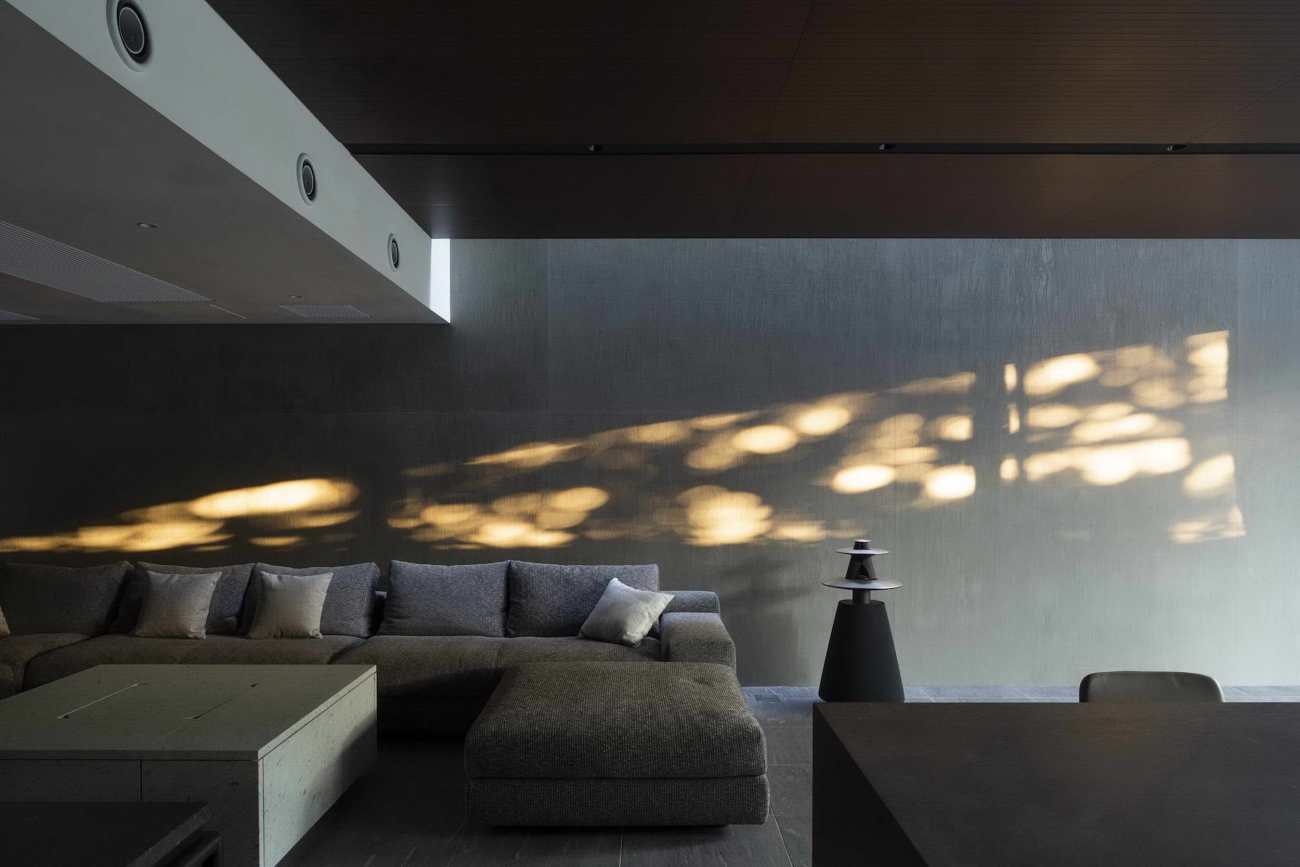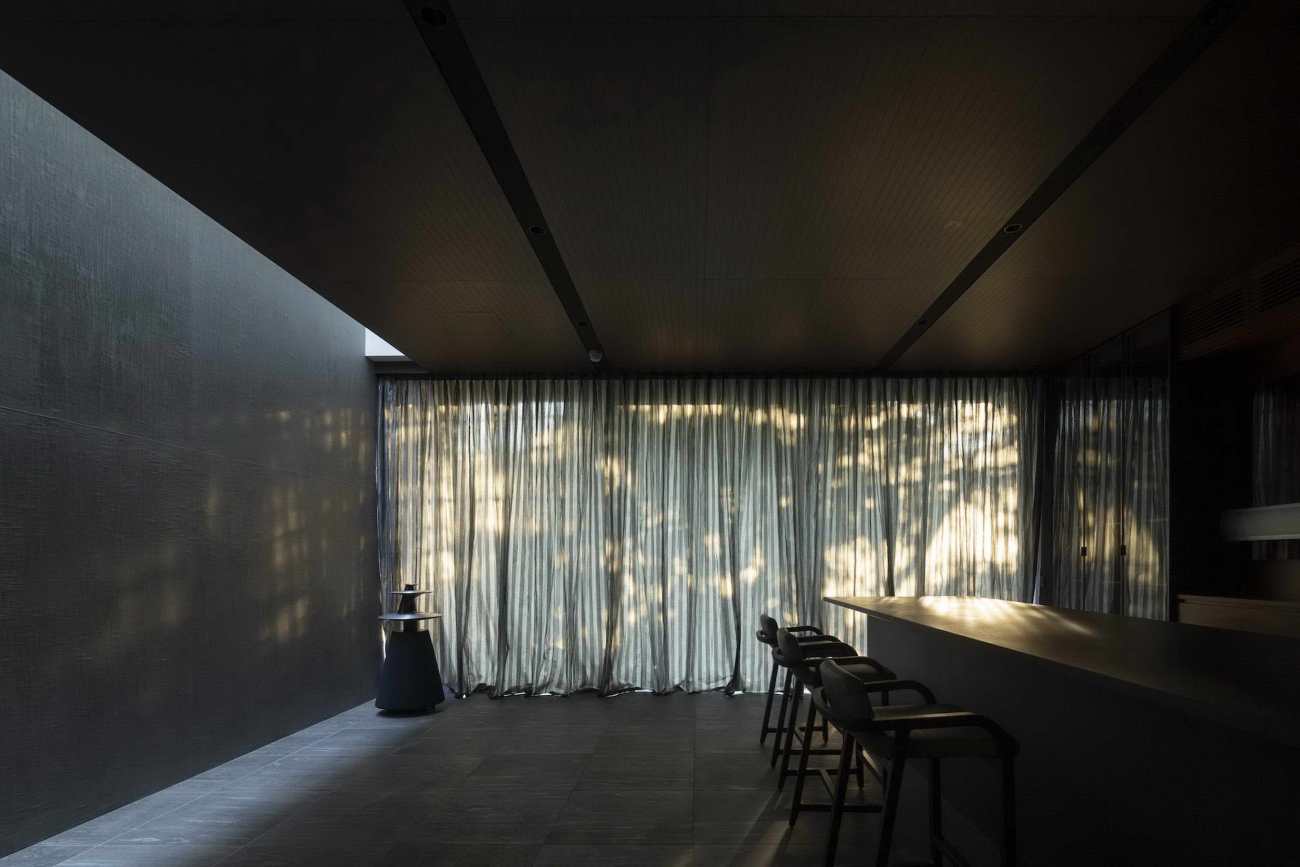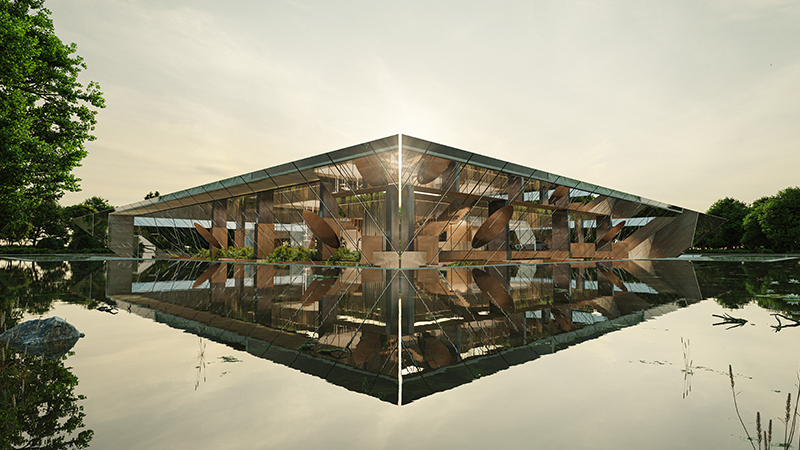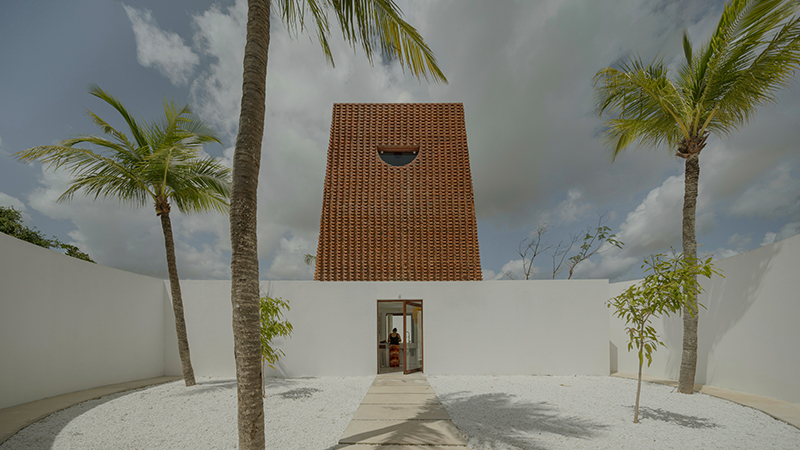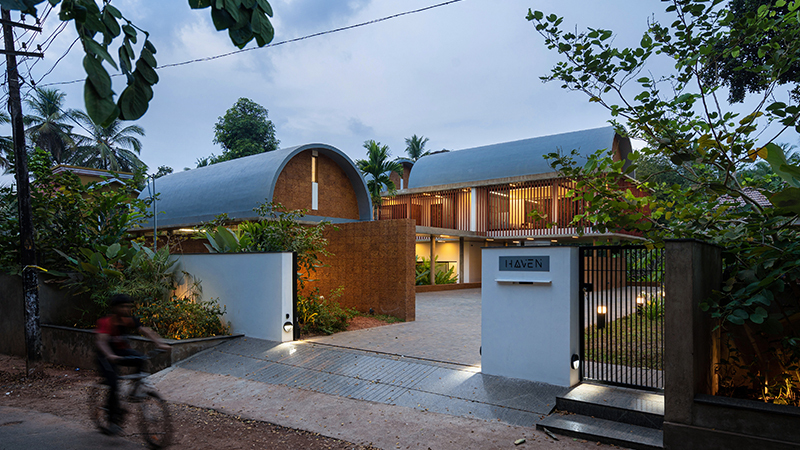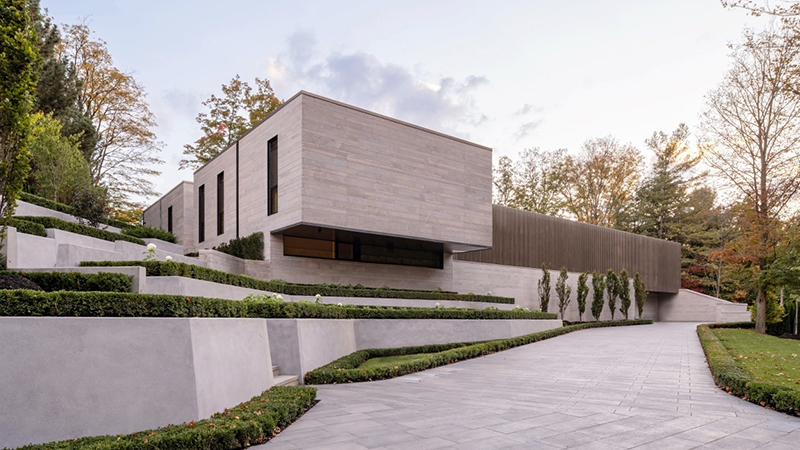| 公司: | Yukio Asari / Love Architecture | 类型: | 建筑 |
|---|---|---|---|
| 地区: | 日本 | 标签: | 别墅私宅 |
这座位于东京市中心的住宅是客户两座住宅中的第二座,两座住宅相距1分钟的路程,都是客户日常居住的地方。客户的唯一要求是我们创造一个现代的空间。在设计师的设计下,项目得以落地,包含地下室的娱乐室和酒窖,一楼的车库和休息室,二楼的娱乐空间,以及三楼的步入式壁橱。
This residence in central Tokyo is the second of two houses located a minute’s walk from one another, both occupied on a routine basis by the client. The client’s sole request was that we create a modern space made up of elements lacking in the first house. This explains the rather unusual plan: a rec room and wine cave in the basement, a garage and lounge on the first floor, a space for entertaining on the second, and walk-in closets on the third.
该项目既不符合普通住宅的典型定义,即一个度过日常生活的地方;也不符合度假屋的定义,即一个逃离日常生活的地方。相反,它介于两者之间,并以新的视角来看待它。在一个典型的度假屋中,只需将建筑与周围的环境开放,就有可能创造出一种非凡的感觉。然而,在这种情况下,由于城市地块较小,只能通过操纵形式与自然光和花园的关系来实现。因此,我们采用了另一种策略来处理整个项目,从外墙到室内、家具和织物,作为一个无边界的整体,其每个部分都具有同等价值,从而创造出一种新的环境表达。
The project fits neither the typical definition of a regular house—that is, a place to spend everyday life—nor that of a vacation home, a place to escape everyday life. Rather, it sits somewhere between the two, intended to expand ordinary life and cast it in a fresh light. In a typical vacation home, it is possible to create a sense of the extraordinary simply by opening up the building to the surrounding environment. In this case, however, because of the small urban lot, only so much could be done through manipulation of the form in relationship to natural light and the garden. We therefore employed an alternate strategy of handling the entire project, from façade to interiors, furniture, and fabrics, as one borderless whole, each of whose parts is of equal value, thereby creating a new kind of environmental expression.
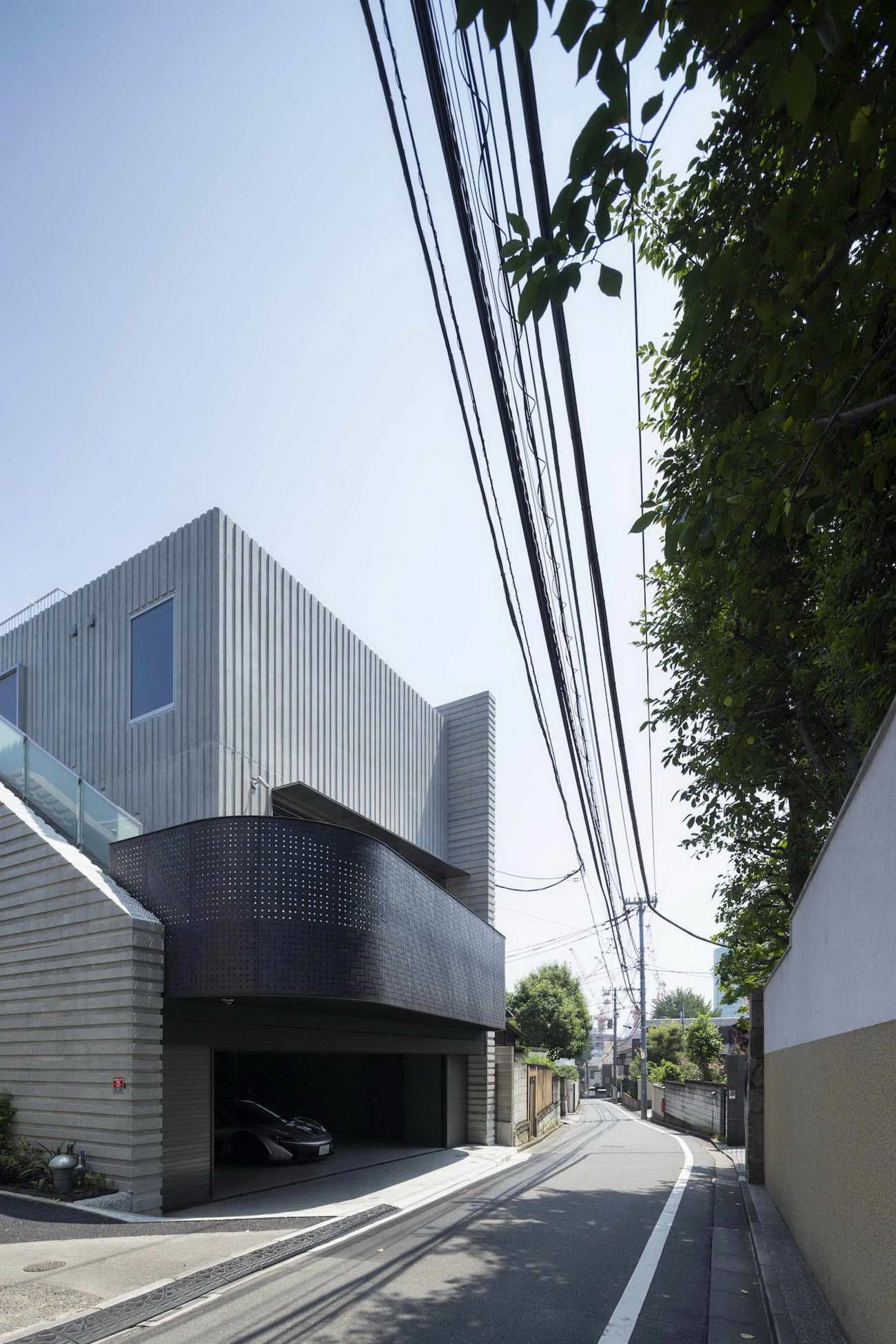 |  |
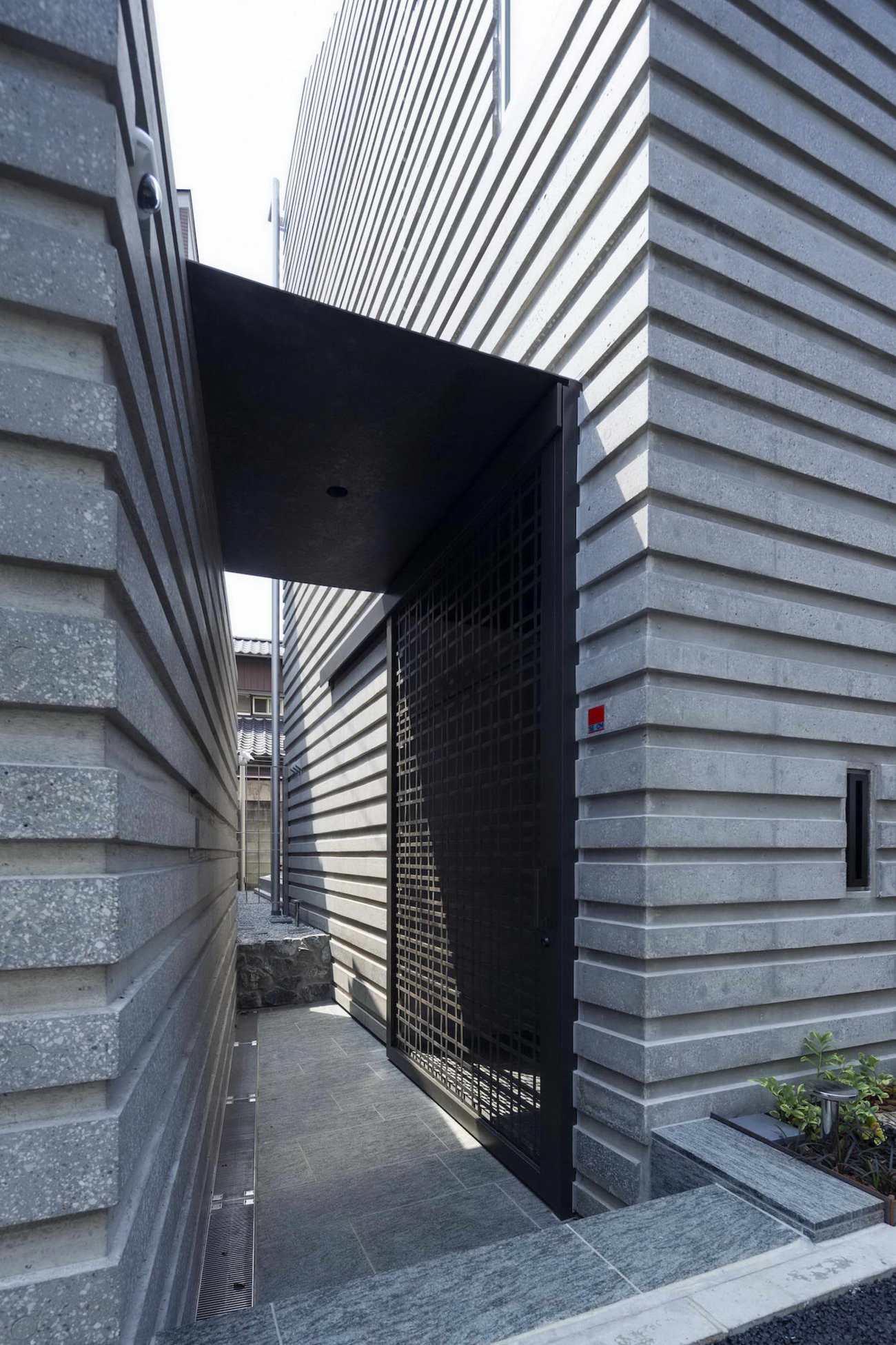 |  |
With every small interval of passing time and shift in natural light, the dense collage of materials used throughout the house takes on a subtly different appearance. Similarly, each step through the space brings unexpected scenes as one moves around forms designed to highlight the unique characteristics of the materials. The ribbed concrete exterior walls contrast a rough surface on the concave portions, achieved by pressing squared lumber into the formwork, with a polished surface on the convex portions. In addition, the ribbing is vertical above the exterior staircase and horizontal below it. The balcony wall is made from stainless steel strips laser-cut into various widths, laced into a basketweave, sprayed with a fluoropolymer coating, and roughed up with a brush for a complex finish. On the walls in the area for entertaining, several plastering processes are layered on top of one another, creating both vertical and horizontal grains similar to woven fabric. Nearby, a metallic curtain and softly upholstered sofa integrate into the space in a way that blurs the boundary between architecture and interior design. During the daytime sunlight pours in from a skylight, but in the evening, the setting sun slants in from the west, completely transforming the mood of the room.
材料和家具的意外组合避免了俗套。前门采用了有纹理的柏木板和加工过的不锈钢把手。在二楼的化妆室,白色作为饰面和家具的基调颜色,突出了纹理和图案的差异。在三楼的浴室里,一辆日本风格的马车和意大利椅子占据了一个由仿石砖和玻璃构建的现代空间。在地下室的酒窖里,带有线性LED灯的不锈钢货架的高科技氛围与经典的意大利瓷器地板形成了鲜明的对比。我们还设计了一个定制的乒乓球桌来配合这个空间。在每一个案例中,对比强烈的材料或图案都被带入了一丝丝的和谐。随着光线的变化,人们在这个充满了许多不同材料、饰面和形式的房子里移动,他们遇到了无限的场景。这种光线、运动、材料和形式之间的互动关系将一个日常的空间转变为一个不间断的非凡空间。
The unexpected combinations of materials and furniture evade description, and by extension, normalization. The front door is finished with textured cypress panels and a machined stainless-steel handle. In the second-floor powder room, the use of white as a keynote color for both finishes and furniture serves to highlight differences in texture and pattern. In the third-floor bathroom, a Japanese-style wagon and Italian chair occupy a modern space constructed from faux stone tiles and glass. In the basement wine cave, the high-tech mood of the stainless-steel shelving with linear LED lights contrasts with a classic Italian porcelain tile floor. We also designed a custom ping-pong table to match the space. In each case, contrasting materials or patterns are brought into a hairs-breadth harmony. As the light shifts and people move through this house full of many different materials, finishes, and forms, they encounter a limitless range of scenes. This interactive relationship between light, movement, material, and form transforms an everyday space into a ceaselessly extraordinary one.
 | 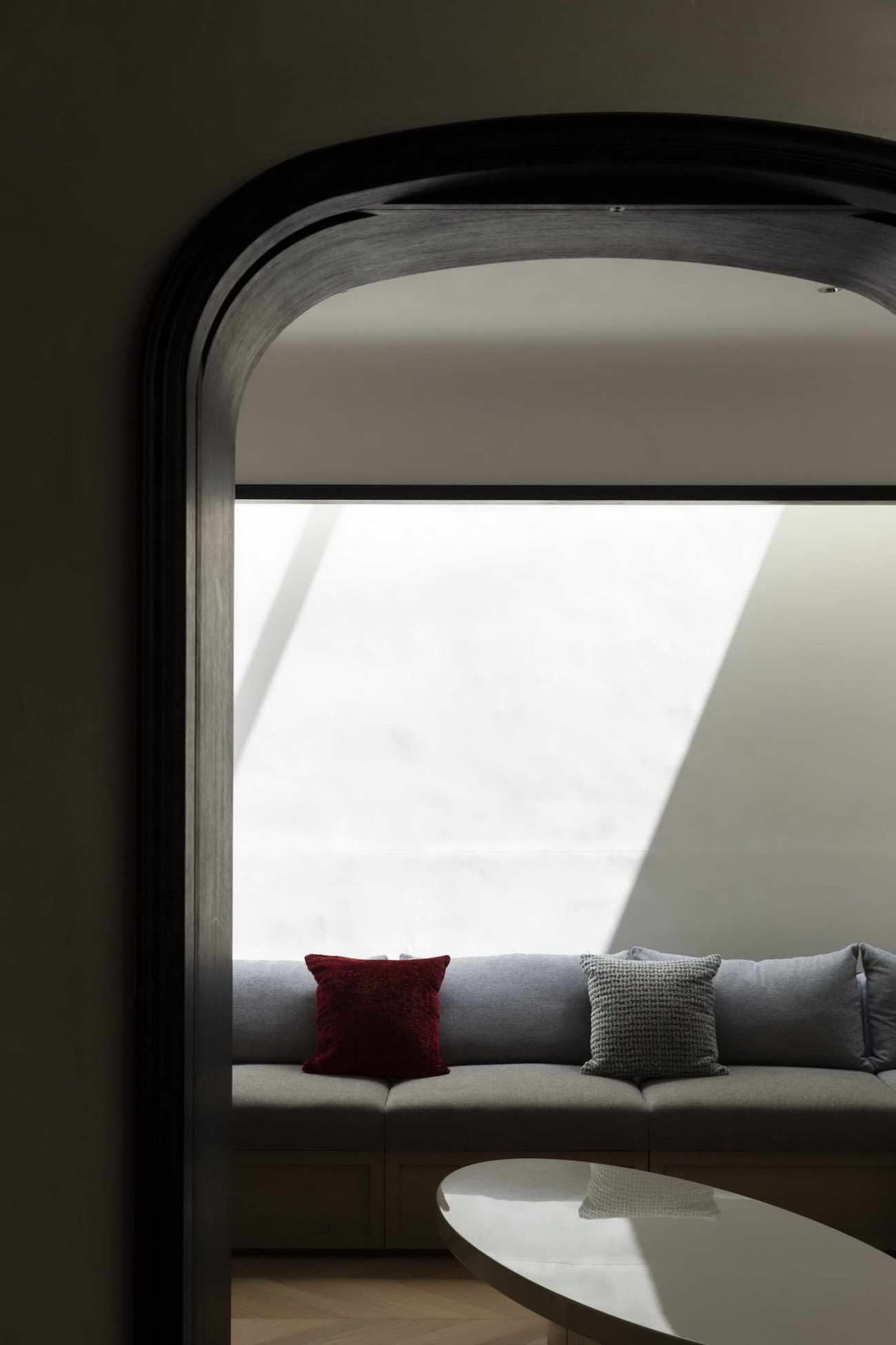 |  |
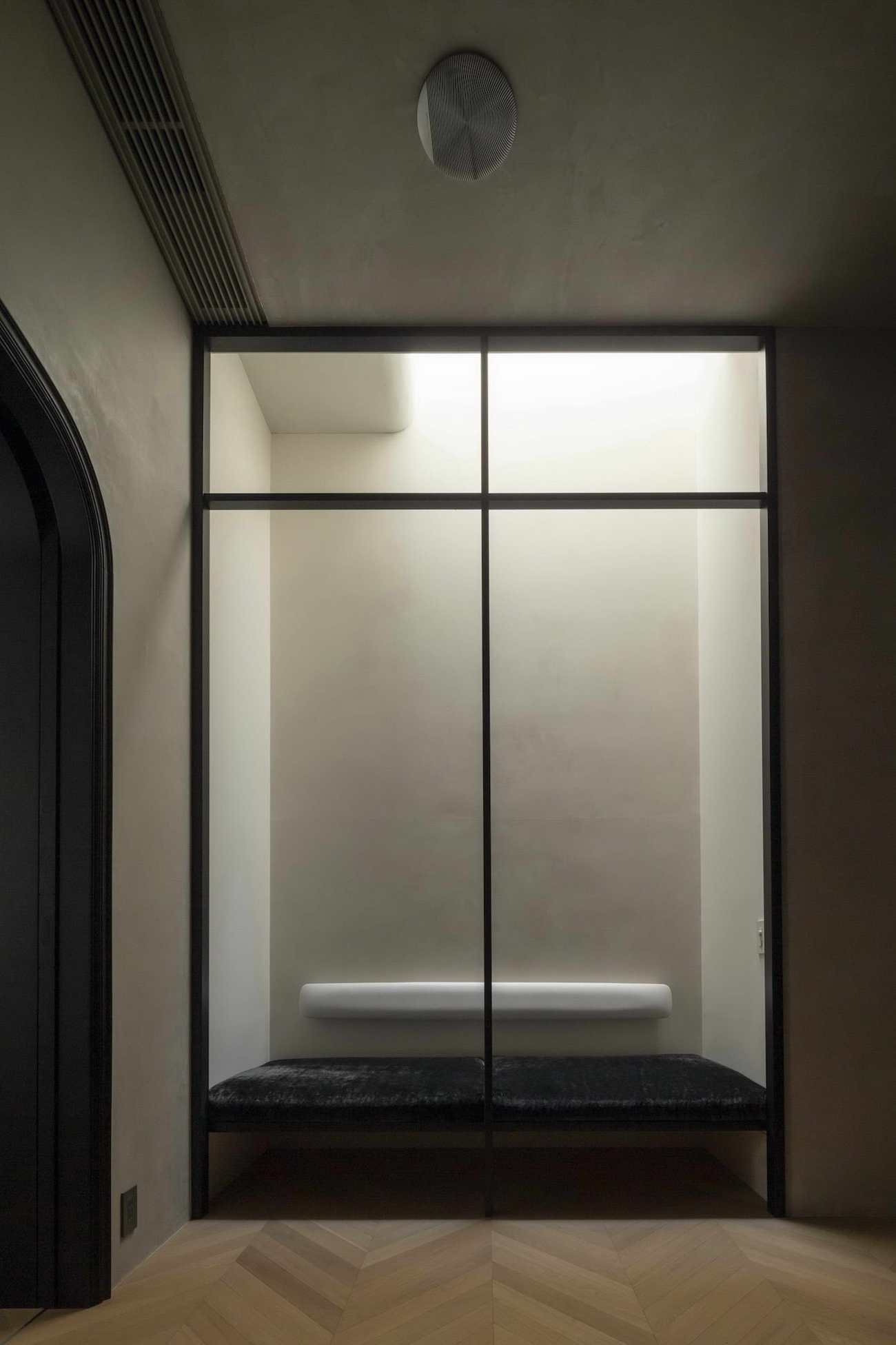 | 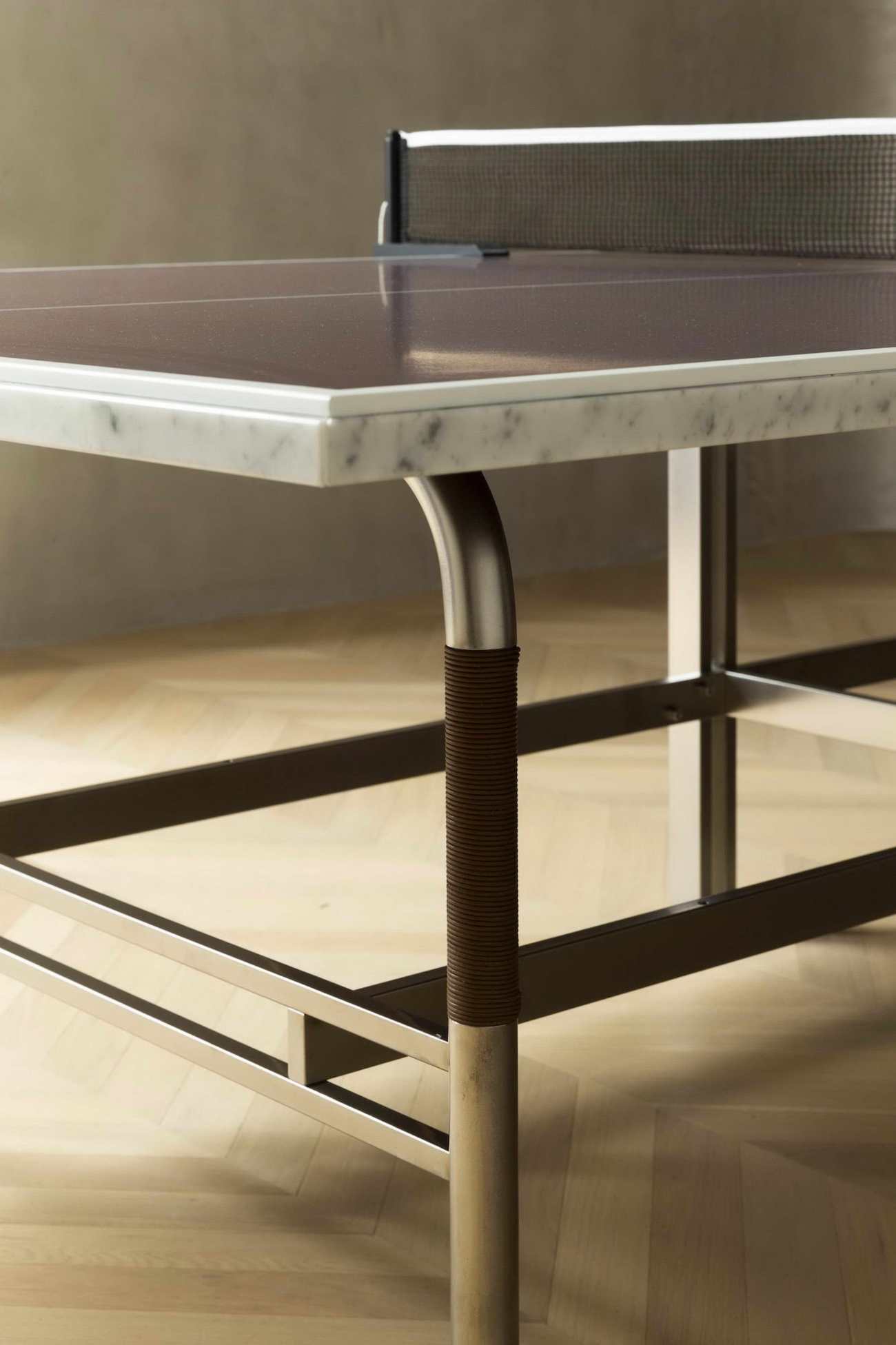 | 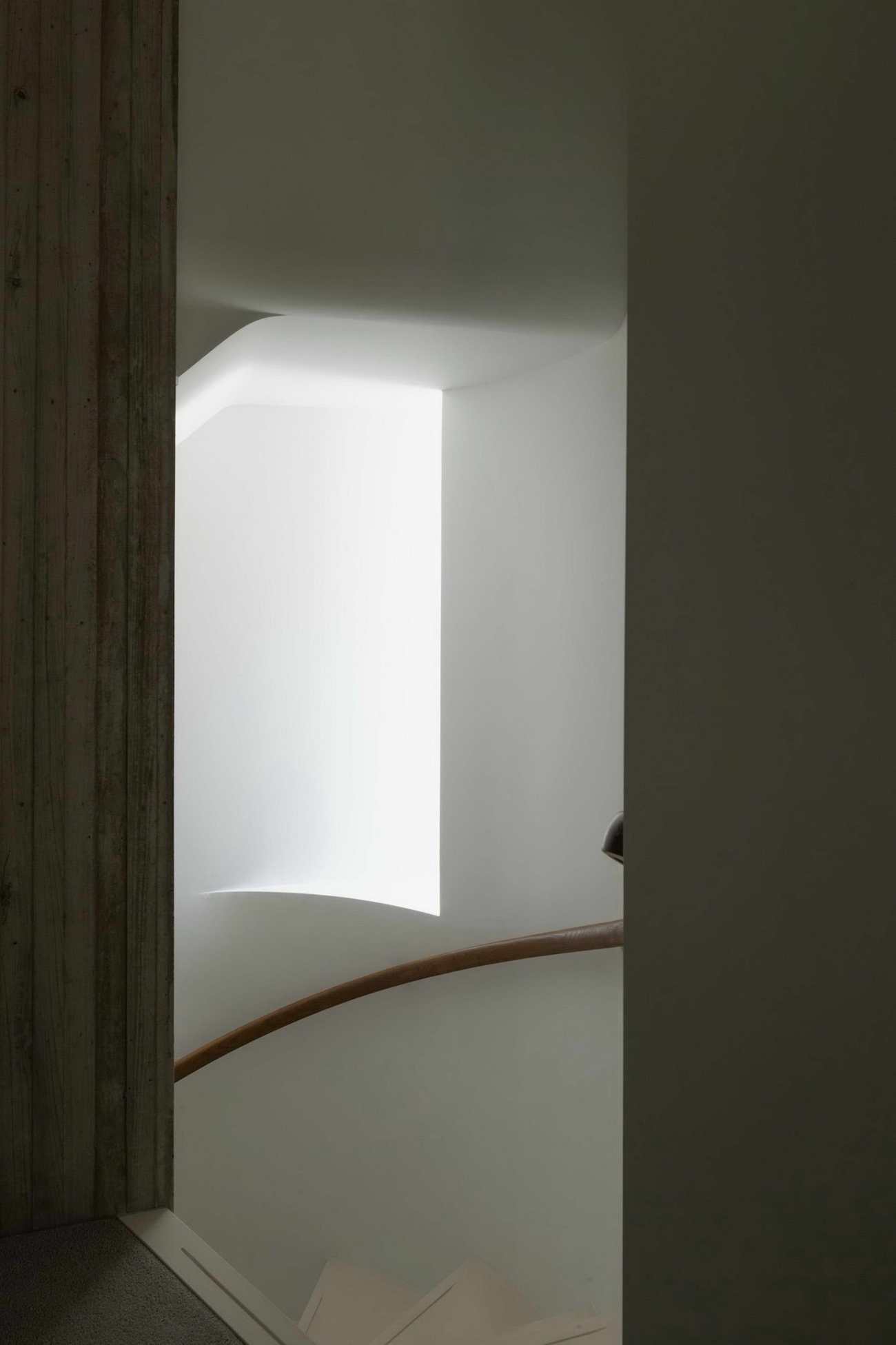 |
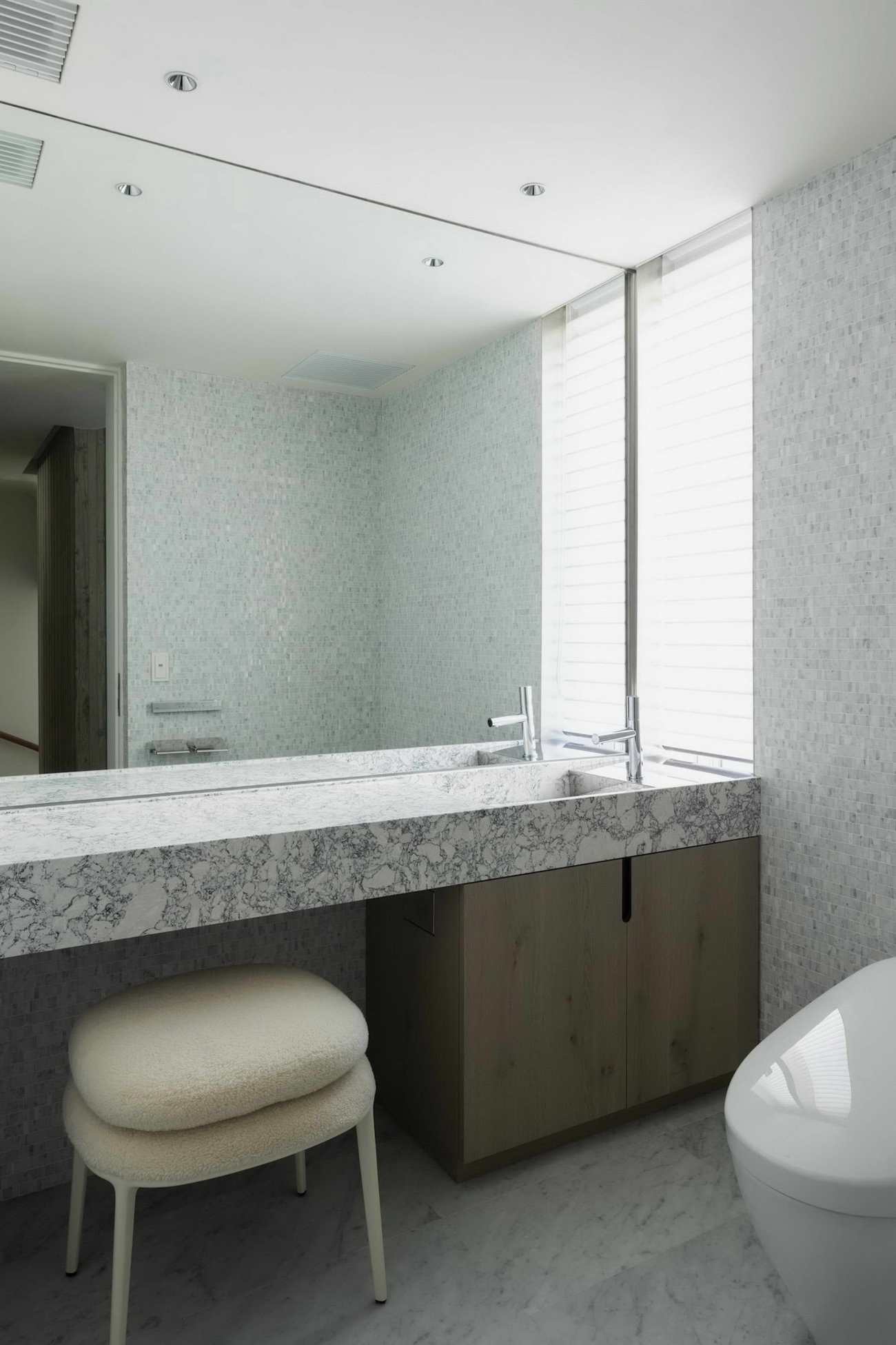 | 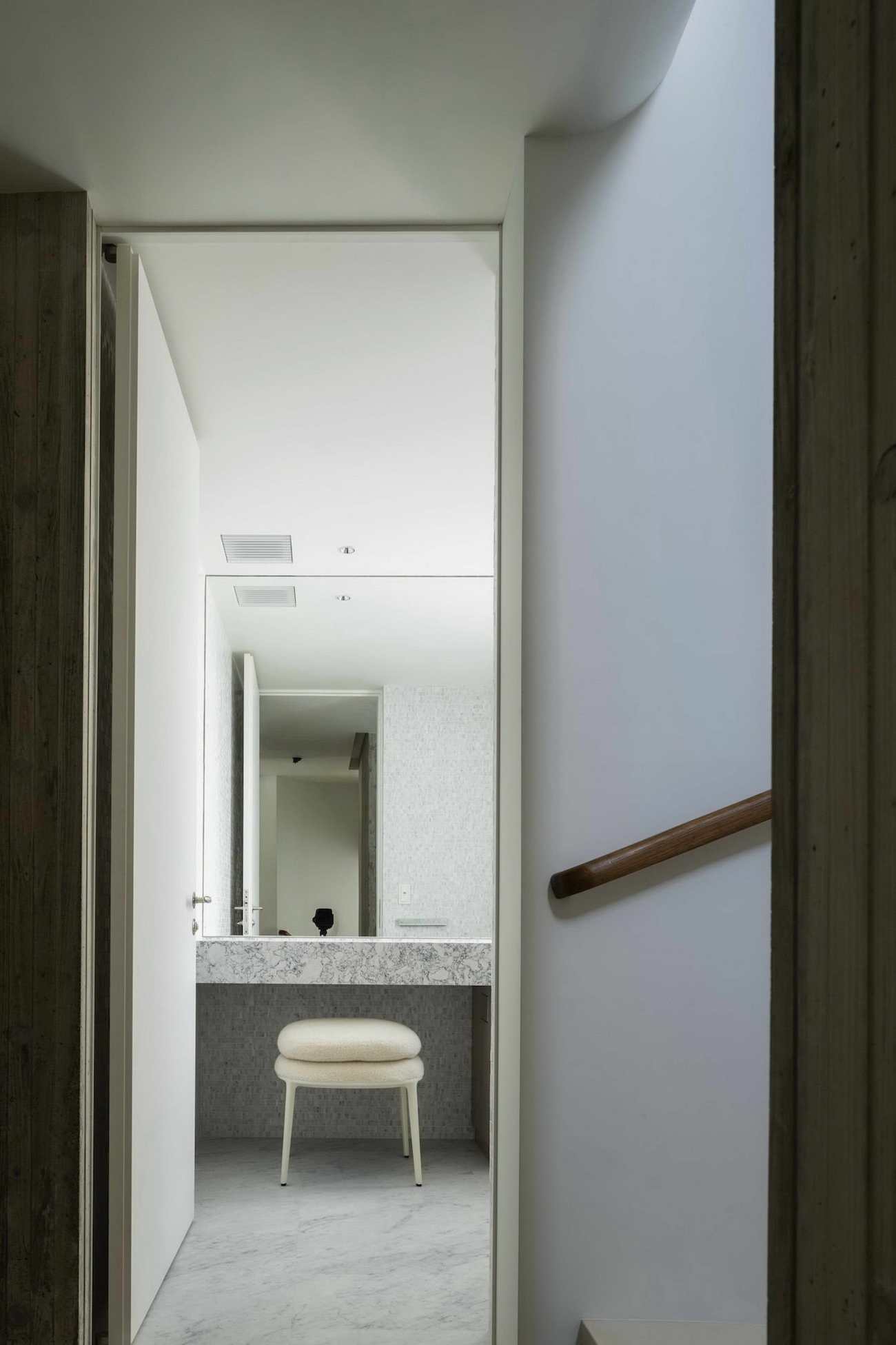 |  |
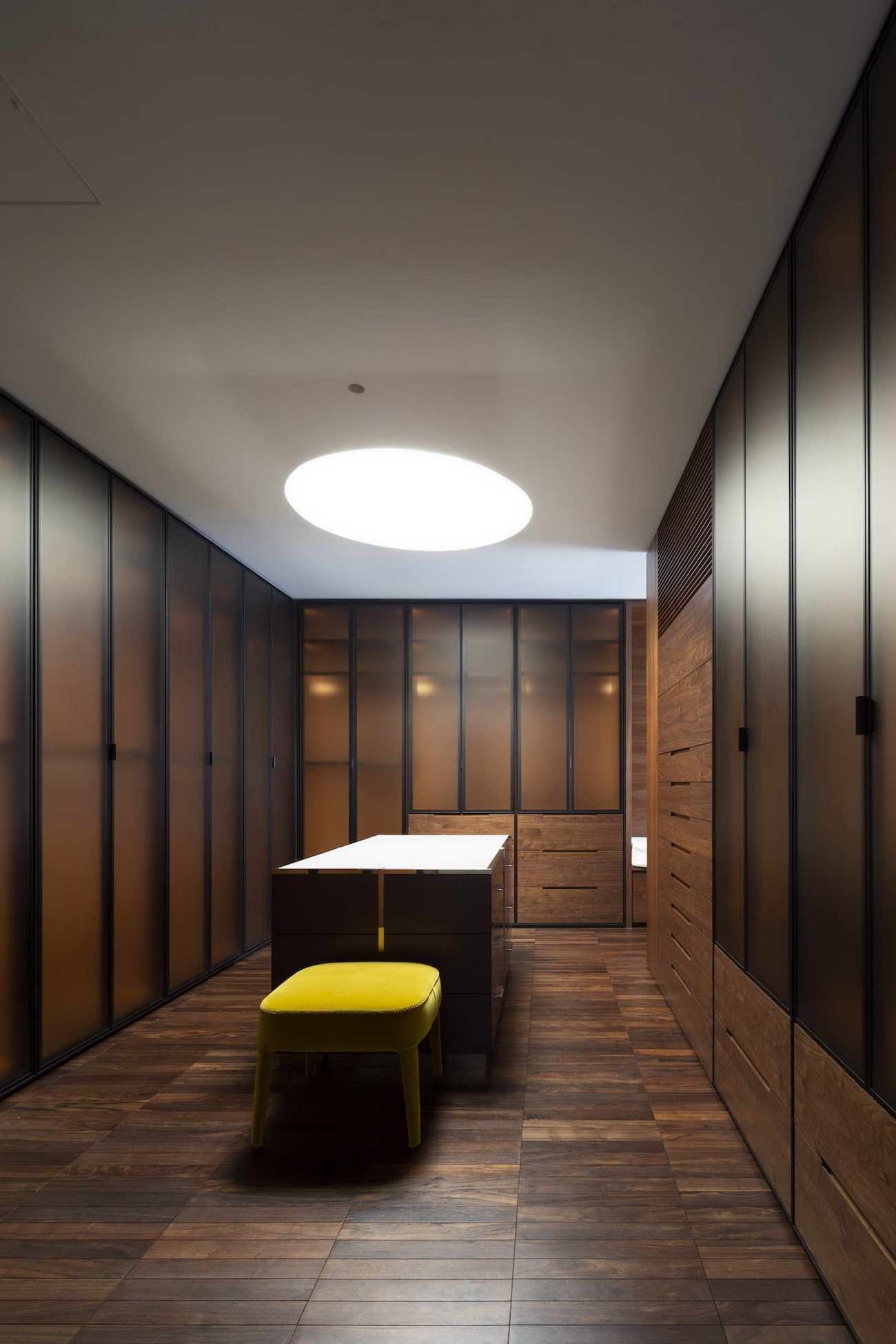 | 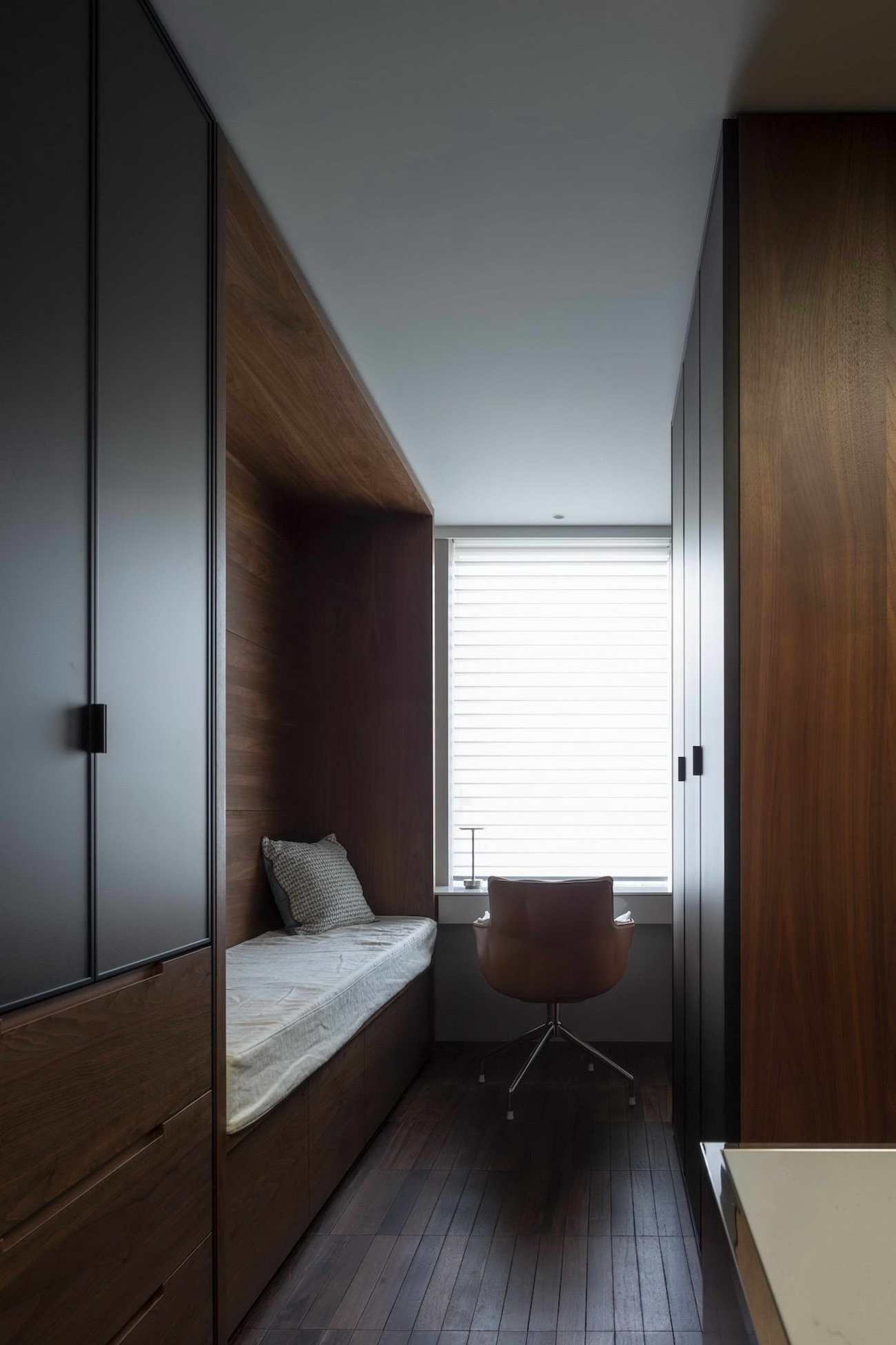 | 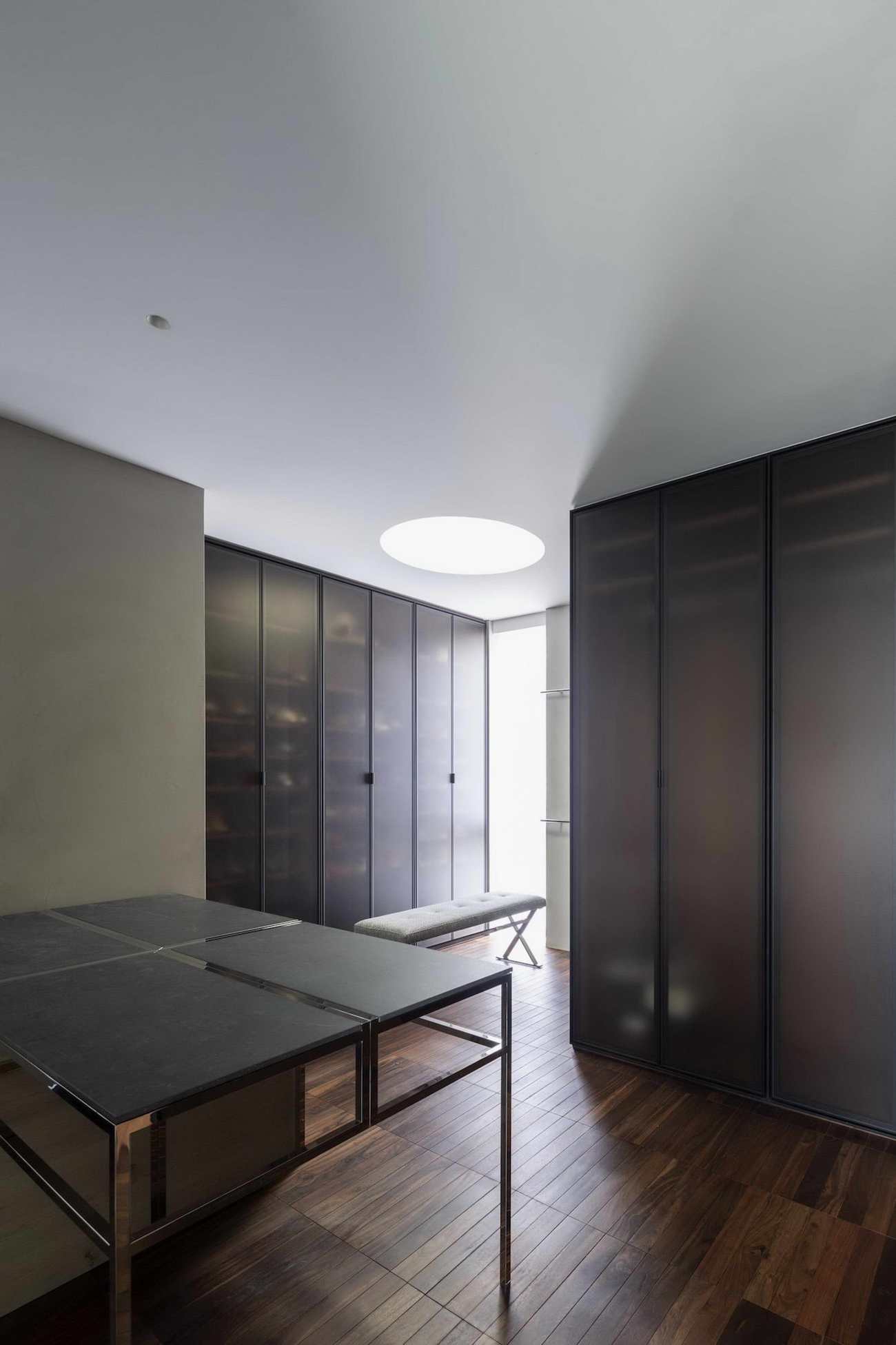 |
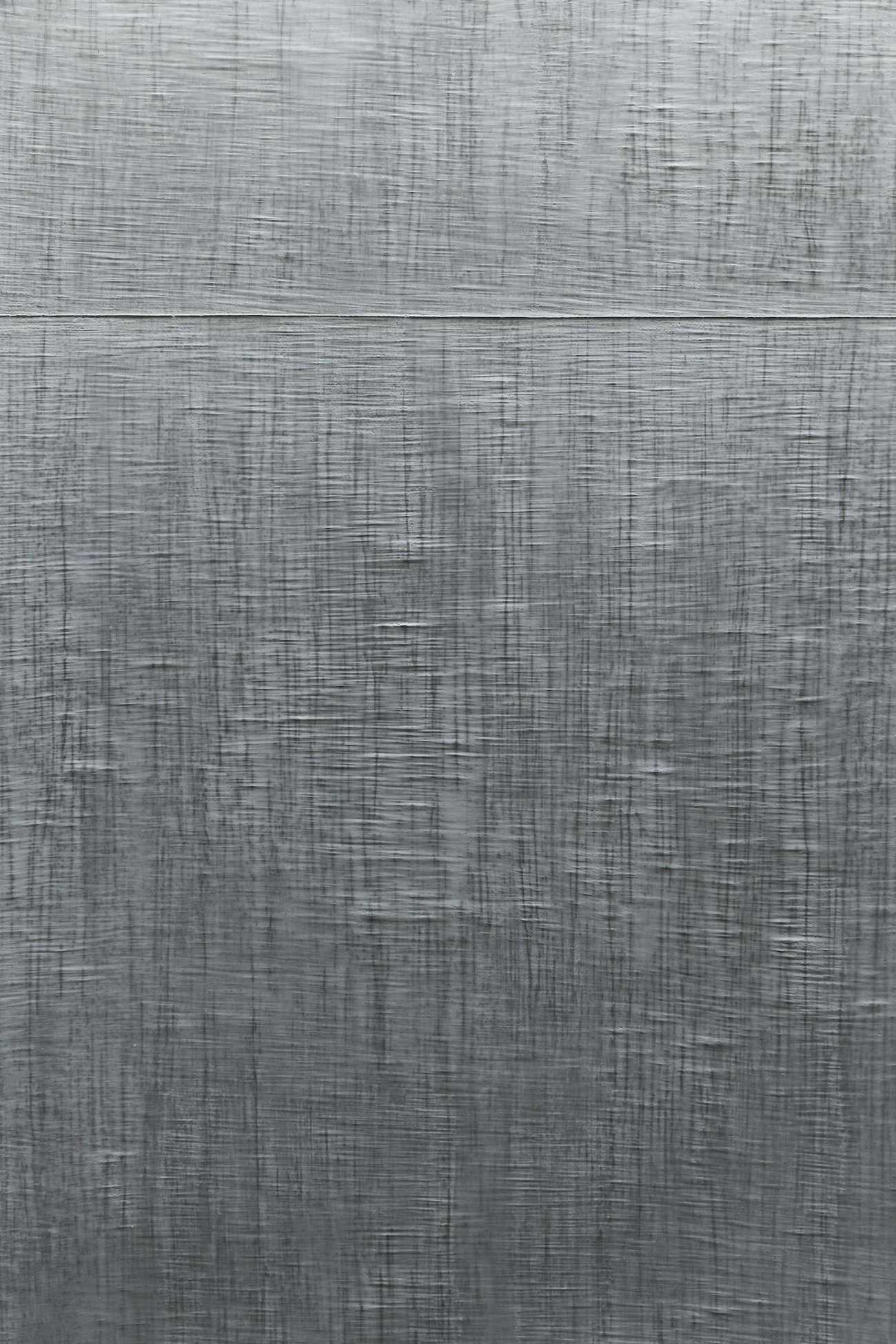 | 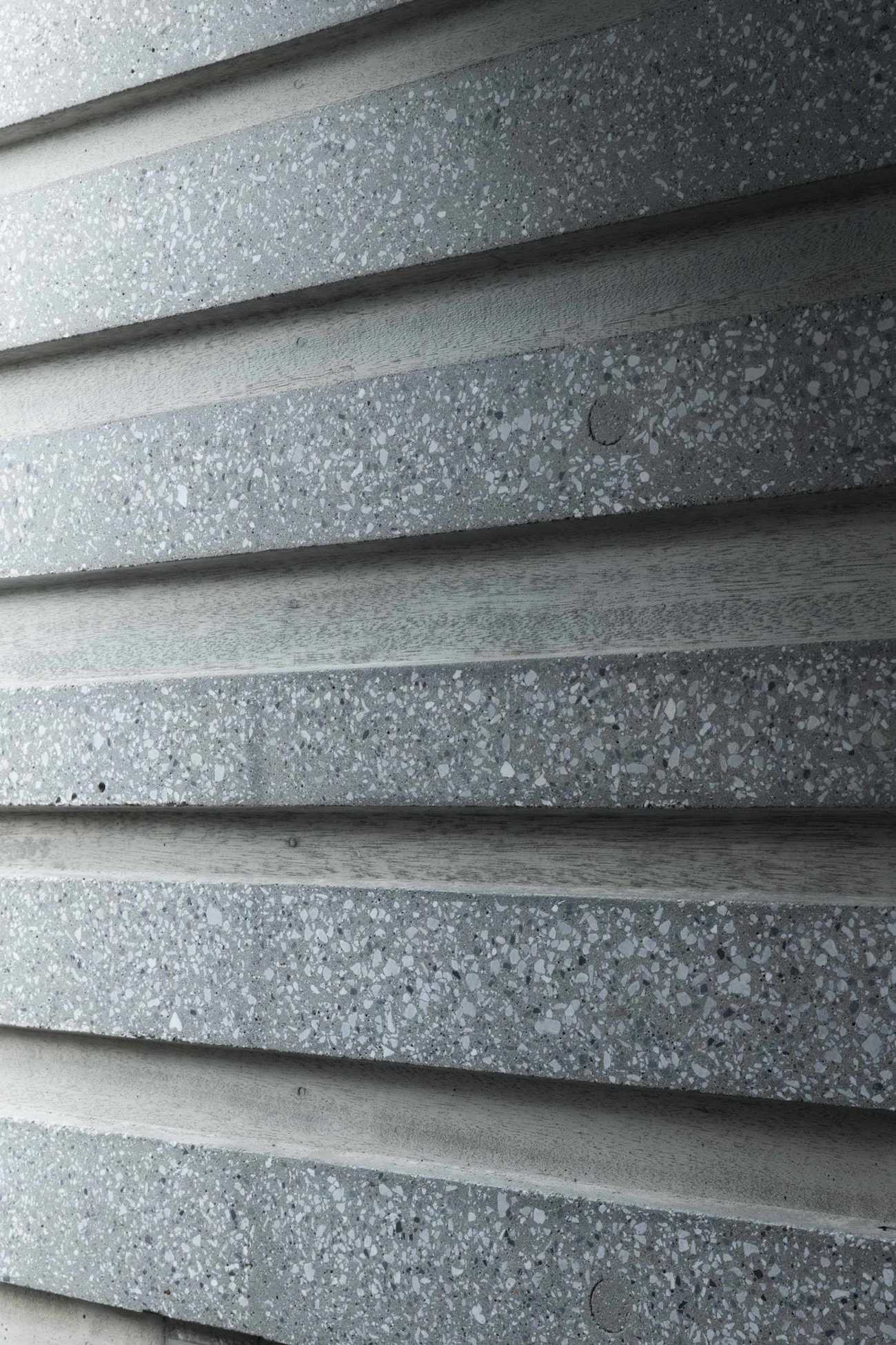 |  |
Project: Extraordinary Ordinary House
Company name : Love Architecture Inc.
E-mail : contact@lovearchitecture.co.jp
URL : www.lovearchitecture.co.jp
Architecture : Yukio Asari / Love Architecture
Structural Engineer : Masaki Structure Laboratory Ltd.
Construction: Maezawa Corporation (Construction cooperation: Satohide Corporation)
Kitchen production: Linea Tarara Inc.
Landscape design: Mark Garden Art Mark Chapman
Location : Tokyo, Japan
Construction period:December, 2018 - July, 2020
Principal Use: Villa
Structure: Reinforced concrete, partly Steel reinforced concrete
Building area:171.74 m2
Total floor area:404.01 m2
The basement floor:126.43 m2
1st floor:109.11 m2
2nd floor:99.14 m2
3rd floor:69.33 m2
Site area: 171.74 m2
Photography: Masao Nishikawa
更新日期:2021-04-22 15:08:58
非常感谢 Yukio Asari / Love Architecture 带来的精彩项目, 查阅更多Appreciations towards Yukio Asari / Love Architecture for sharing wonderful work on hhlloo. Click to see more works!

